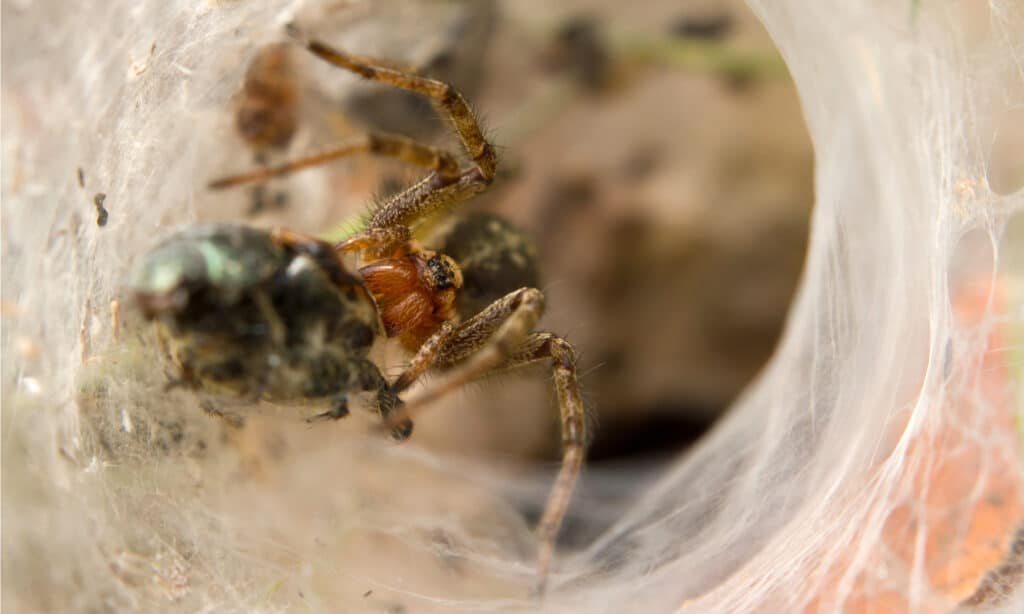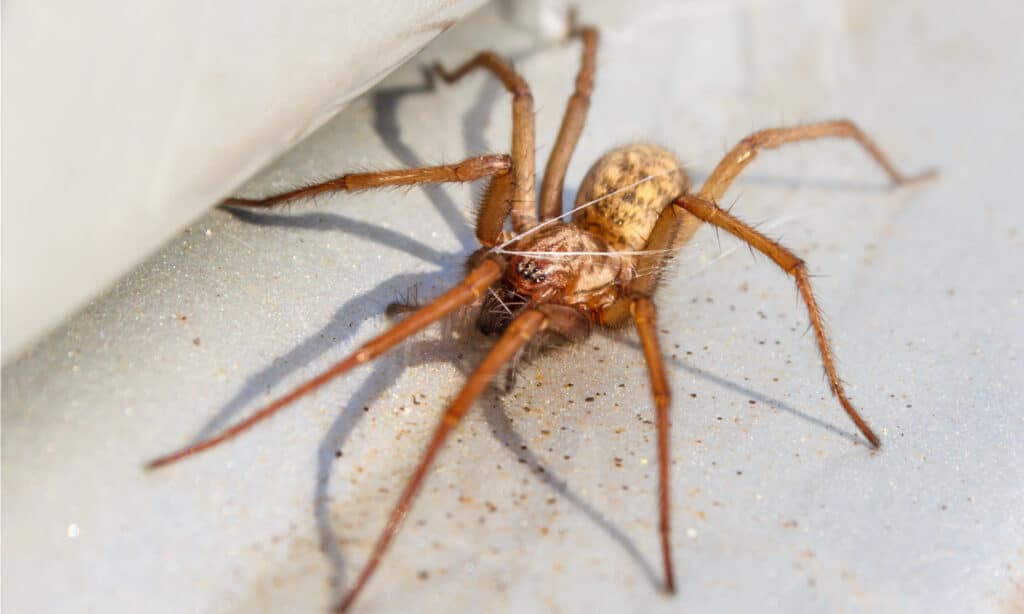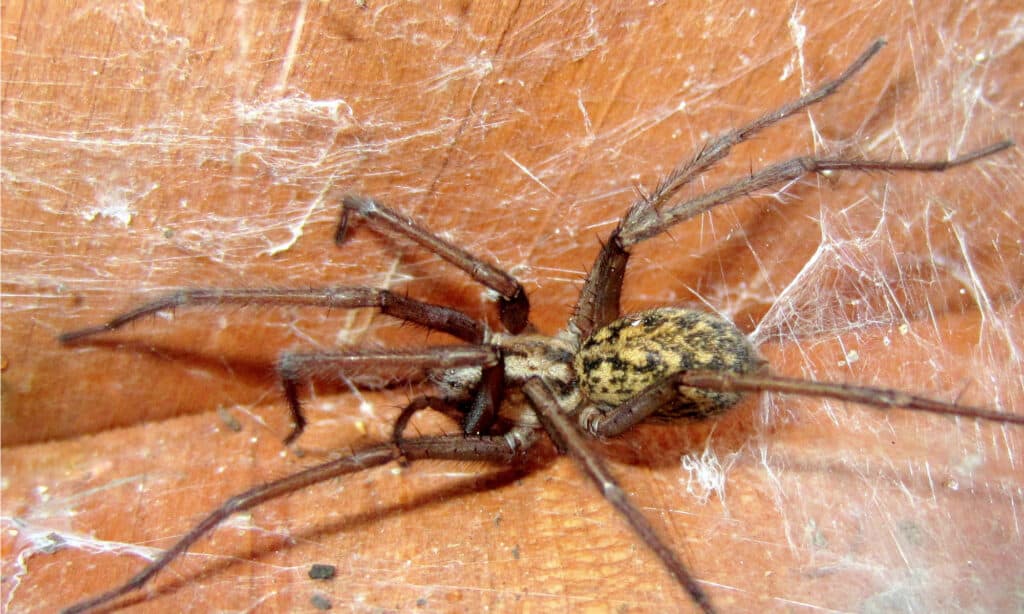The hobo spider is a member of the family of spiders known as “funnel-web spiders.” However, it is not to be confused with the Australian funnel-web spider. Also known as the “aggressive house spider,” the hobo spider is widespread in the Pacific Northwest.
Hobo spiders are mostly found in Colorado, Montana, Oregon, Utah, Washington, and Wyoming. To know how to respond if you find one of these critters in your home, you should know if they are hazardous or even poisonous.
This article will discuss what hobo spiders look like, if they are poisonous or dangerous, the symptoms of a hobo spider bite, how to treat the bite, and how to get rid of a hobo spider.
What Do Hobo Spiders Look Like?

Hobo spiders weave funnel-shaped webs.
©corlaffra/Shutterstock.com
It’s not always easy to tell if a spider is a hobo just by its appearance. Many spiders have long legs and a brown body with yellowish markings.
An average hobo spider has a body length of around a quarter-inch to a half-inch and a leg spread of about one to two inches. The hobo spider has a smooth, matte appearance. Its abdomen is frequently covered in light-colored patterns that are absent in other spider species. Chevron or arrow-shaped patterns can appear on these markings on occasion. Hobo spiders are also known for their unusual funnel-shaped webs.
Are Hobo Spiders Poisonous?
When threatened, hobo spiders will bite, but they are not poisonous or venomous. Hobo spider venom was formerly thought to be poisonous, a medical risk that might cause necrotic lesions. Part of this is because many people confuse the hobo spider with the brown recluse spider, which is highly venomous. Later studies disproved these claims, and the hobo spider is no longer regarded as a medical concern.
Are Hobo Spiders Dangerous?
Contrary to popular opinion, hobo spiders aren’t as dangerous as people think. These spiders are innocuous or cause only minimal symptoms if bitten. New research demonstrates that the hobo spider bite isn’t as hazardous to humans as previously thought.
It’s interesting to note that the hobo spider does not normally reside indoors due to its nomadic lifestyle. The fact that spiders prefer to flee rather than bite is also a good point to keep in mind.
What Are The Symptoms Of A Hobo Spider Bite?

A hobo spider’s bite isn’t potent enough to cause life-threatening consequences.
©Andrew Balcombe/Shutterstock.com
Hobo spiders can bite you, and you may not even know it. Their bite is almost subtly painful, and you may not notice it. The months of July through September are thought to be the most common for hobo spider bites. Male spiders are on the prowl for females at this time of year.
According to the Center for Disease Control (CDC), the hobo spider venom has not been proven to produce skin necrosis, unlike other spider venoms.
Rarely, people may experience the following after being bitten by a hobo spider:
- Mild pain at the bite site
- Headache
- Acute nausea
- Weariness
Extensive research concluded that the venom delivered by the hobo spider bite isn’t potent enough to cause life-threatening consequences.
How To Treat A Hobo Spider Bite
It’s important to act as soon as you suspect a spider bite. This includes:
- using mild soap and water to clean the bitten area,
- minimizing pain and swelling by applying cold compression to the bite site, and
- lifting your arm or leg if the bite was on that part of your body.
To be safe, you should seek medical attention as soon as possible after delivering first aid. A tetanus booster vaccine may be in order. Without endangering yourself, bring in the spider to help diagnose and treat the problem.
Remember, what appears to be a spider bite may, in fact, be an entirely different skin problem. And, if it is a hobo spider bite, most skin reactions that occur are short-lived and mild.
How To Get Rid Of A Hobo Spider Without Killing It

Hobo spiders can be relocated to gardens where they can be used to catch insects.
©Randy Bjorklund/Shutterstock.com
If possible, use a net or cup to capture these fast-moving, harmless spiders to be relocated to a garden or meadow, where they can be used to catch insects.
The photo featured at the top of this post is © SNEHIT PHOTO/Shutterstock.com
FAQs (Frequently Asked Questions)
Why Are They Called Hobo Spiders?
It is known as a “hobo spider” because of its frequent sightings next to train tracks, as well as in rock retaining walls, building supplies, rubbish, and near foundations.
Thank you for reading! Have some feedback for us? Contact the AZ Animals editorial team.







